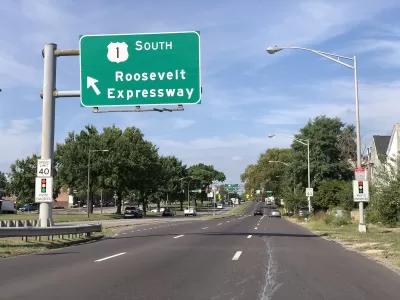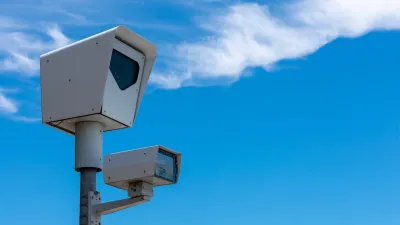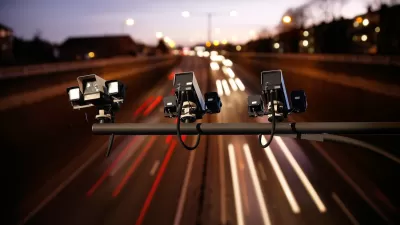Speeding violations plummeted after automated enforcement cameras were installed along Roosevelt Boulevard.

After Pennsylvania legalized speed cameras in 2018, “there was a substantial and statistically significant reduction in fatalities and crashes,” reveals a new study from the University of Pennsylvania.
As Maylin Tu explains in Next City, “Starting in June 2020, the city of Philadelphia placed cameras at eight locations and issued warnings to vehicles going 11 miles or more over the speed limit. After a 60-day grace period, speeding vehicles were fined.” The Philadelphia Parking Authority found a 90 percent reduction in speeding violations along the sections of Roosevelt Boulevard where the cameras were installed.
Speed cameras, sometimes known as automated traffic enforcement, are a controversial tool that some safety advocates say saves lives but which critics say disproportionately targets minority and low-income drivers and can be a ‘cash grab’ for cities rather than a true safety effort. “According to traffic safety advocates, it’s important for money to be reinvested directly into the community where the speed cameras are located. In the case of the pilot, the money is going to fund traffic safety projects, including $12 million to improve Roosevelt Boulevard by adding curb extensions and permeable pavement, among other upgrades.”
FULL STORY: Pennsylvania Legalized Speed Cameras. You Won’t Believe What Happened Next.

Alabama: Trump Terminates Settlements for Black Communities Harmed By Raw Sewage
Trump deemed the landmark civil rights agreement “illegal DEI and environmental justice policy.”

Planetizen Federal Action Tracker
A weekly monitor of how Trump’s orders and actions are impacting planners and planning in America.

The 120 Year Old Tiny Home Villages That Sheltered San Francisco’s Earthquake Refugees
More than a century ago, San Francisco mobilized to house thousands of residents displaced by the 1906 earthquake. Could their strategy offer a model for the present?

Seattle Voters Approve Social Housing Referendum
Voters approved a corporate tax to fund the city’s housing authority despite an opposition campaign funded by Amazon and Microsoft.

The Five Most-Changed American Cities
A ranking of population change, home values, and jobs highlights the nation’s most dynamic and most stagnant regions.

USDOT Repeals Emissions Monitoring Rule
A Biden-era regulation required states to report and plan to reduce transportation-related emissions.
Urban Design for Planners 1: Software Tools
This six-course series explores essential urban design concepts using open source software and equips planners with the tools they need to participate fully in the urban design process.
Planning for Universal Design
Learn the tools for implementing Universal Design in planning regulations.
Clanton & Associates, Inc.
Jessamine County Fiscal Court
Institute for Housing and Urban Development Studies (IHS)
City of Grandview
Harvard GSD Executive Education
Toledo-Lucas County Plan Commissions
Salt Lake City
NYU Wagner Graduate School of Public Service





























